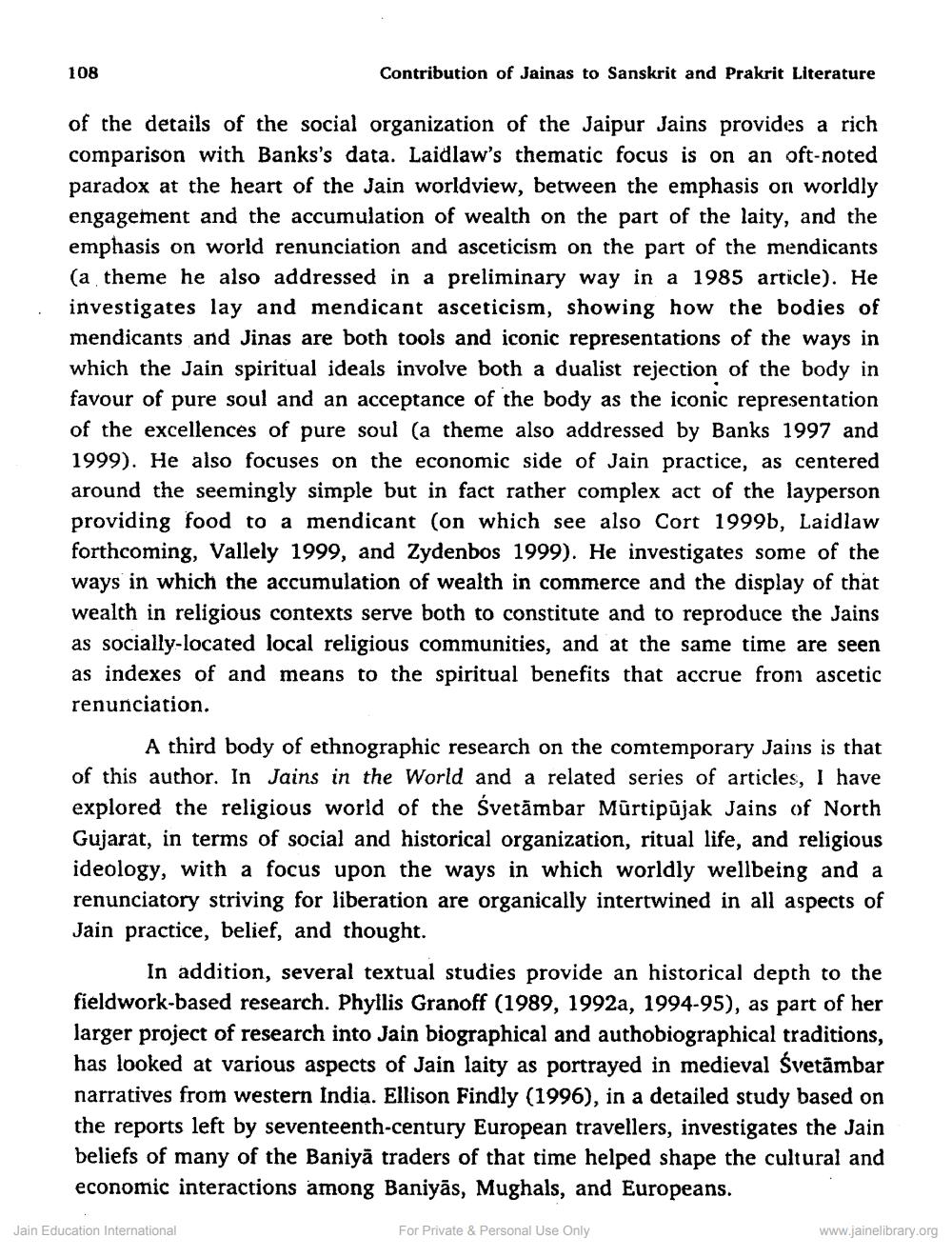________________
108
Contribution of Jainas to Sanskrit and Prakrit Literature
of the details of the social organization of the Jaipur Jains provides a rich comparison with Banks's data. Laidlaw's thematic focus is on an oft-noted paradox at the heart of the Jain worldview, between the emphasis on worldly engagement and the accumulation of wealth on the part of the laity, and the emphasis on world renunciation and asceticism on the part of the mendicants (a theme he also addressed in a preliminary way in a 1985 article). He investigates lay and mendicant asceticism, showing how the bodies of mendicants and Jinas are both tools and iconic representations of the ways in which the Jain spiritual ideals involve both a dualist rejection of the body in favour of pure soul and an acceptance of the body as the iconic representation of the excellences of pure soul (a theme also addressed by Banks 1997 and 1999). He also focuses on the economic side of Jain practice, as centered around the seemingly simple but in fact rather complex act of the layperson providing food to a mendicant (on which see also Cort 1999b, Laidlaw forthcoming, Vallely 1999, and Zydenbos 1999). He investigates some of the ways in which the accumulation of wealth in commerce and the display of that wealth in religious contexts serve both to constitute and to reproduce the Jains as socially located local religious communities, and at the same time are seen as indexes of and means to the spiritual benefits that accrue from ascetic renunciation.
A third body of ethnographic research on the comtemporary Jains is that of this author. In Jains in the World and a related series of articles, I have explored the religious world of the Svetämbar Murtipujak Jains of North Gujarat, in terms of social and historical organization, ritual life, and religious ideology, with a focus upon the ways in which worldly wellbeing and a renunciatory striving for liberation are organically intertwined in all aspects of Jain practice, belief, and thought.
In addition, several textual studies provide an historical depth to the fieldwork-based research. Phyllis Granoff (1989, 1992a, 1994-95), as part of her larger project of research into Jain biographical and authobiographical traditions, has looked at various aspects of Jain laity as portrayed in medieval Svetämbar narratives from western India. Ellison Findly (1996), in a detailed study based on the reports left by seventeenth-century European travellers, investigates the Jain beliefs of many of the Baniyā traders of that time helped shape the cultural and economic interactions among Baniyās, Mughals, and Europeans.
Jain Education International
For Private & Personal Use Only
www.jainelibrary.org




